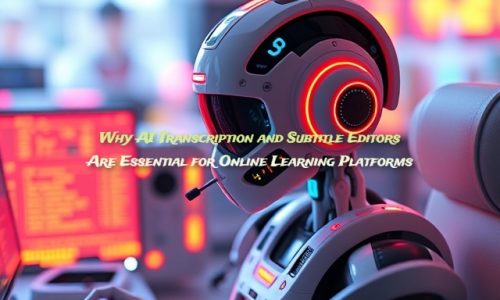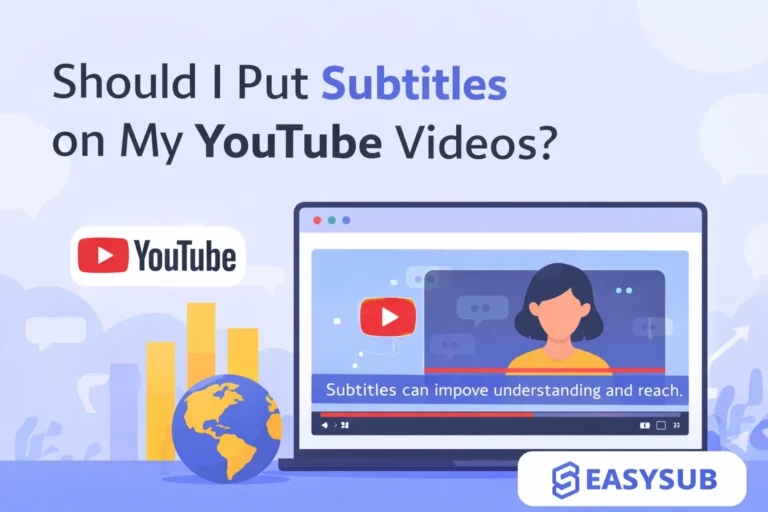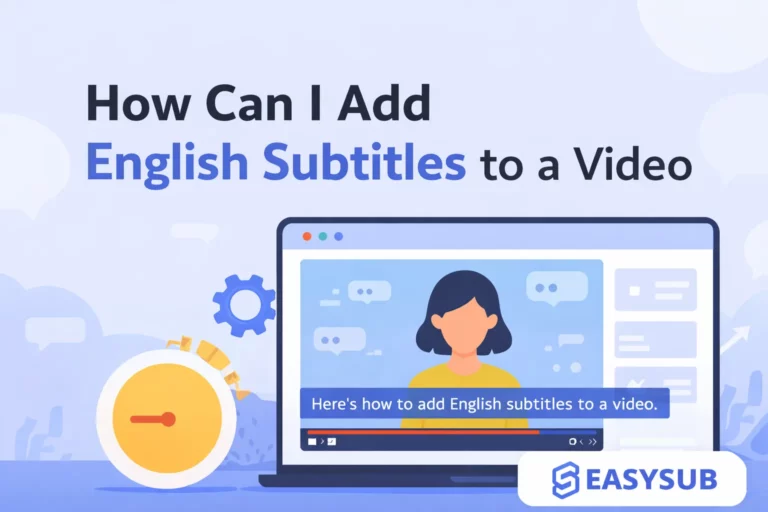Vloga AI transkripcije v spletnem izobraževanju
Predstavljajte si tole: predavanje je polno dragocenih spoznanj, študent pa le s težavo dohaja hiter tempo. Morajo se ustaviti, previti nazaj in se napeti, da ujamejo vsako besedo. Zdaj ima ta isti študent s transkripcijo z umetno inteligenco besedilno različico predavanja, pripravljeno za branje in pregledovanje s svojo hitrostjo.
Transkripcija z umetno inteligenco je več kot le orodje za pretvorbo govora v besedilo. Gre za ustvarjanje boljšega učnega okolja za vse. Takole:
- Dostopnost za vse: Glede na študijo, ki jo je Svetovna zdravstvena organizacijapribližno 1,5 milijarde ljudi živi z določeno stopnjo izgube sluha. AI prepis pomaga narediti spletne tečaje dostopne tem študentom z zagotavljanjem besedilnih različic zvočne vsebine v realnem času. Platforme, kot so Udemy in Coursera izkoristite storitve prepisovanja, da zagotovite, da učenci ne bodo zapostavljeni.
- Časovno in stroškovno učinkovito: Za razliko od ročnega prepisovanja, ki je dolgotrajno in drago, prepisovanje z umetno inteligenco avtomatizira postopek. Orodja kot Otter.ai in Rev.com ponašajo se z impresivnimi stopnjami natančnosti, ki pogosto dosegajo do 95% za čist zvok. To pomeni, da lahko inštruktorji porabijo manj časa za prepisovanje in več časa za osredotočanje na ustvarjanje privlačne vsebine z uporabo AI video urejevalnik.
- Izboljšana možnost iskanja: Ste že kdaj poskušali najti določeno temo v 90-minutnem predavanju? S transkripcijami lahko učenci hitro iščejo ključne izraze v besedilu, s čimer prihranijo čas in frustracije. Ta funkcija je spremenila igro za platforme, kot je Zoom in Google Meet, kjer so transkripcije na voljo po vsaki seji.

Zakaj so urejevalniki podnapisov bistveni za učenje na podlagi videa
Podnapisi niso samo za tiste, ki gledajo tuji film na Netflixu – ključnega pomena so za razumevanje in ohranjanje izobraževalne vsebine. Urejevalniki podnapisov, zlasti tisti, ki jih poganja umetna inteligenca, poenostavijo postopek dodajanja natančnih podnapisov video predavanjem in naredijo učenje učinkovitejše. Evo, zakaj so pomembni:
- Izboljšano razumevanje: Po raziskavi avtorja Raziskave in razvoj izobraževalne tehnologije, učenci ob gledanju videoposnetkov s podnapisi ohranijo 15% več informacij. Urejevalniki podnapisov pomagajo premostiti vrzel med govorjenimi besedami in vizualnimi učenci ter zagotavljajo, da je vsebina jasna in enostavna za sledenje.
- Podiranje jezikovnih ovir: Platforme, kot so Duolingo in Akademija Khan sprejeli podnapise, da bi dosegli globalno občinstvo. Orodja, ki jih poganja AI, kot npr Opis in Vesel pisar lahko samodejno prevede podnapise v več jezikov, s čimer razširi doseg enega tečaja preko meja.
- Doslednost in natančnost: Urejevalniki podnapisov z umetno inteligenco zagotavljajo, da so podnapisi dosledni v celotnem videoposnetku, kar odpravlja zamudno opravilo ročnega prilagajanja. Natančnost, ki jo ponuja umetna inteligenca, omogoča jasne in natančne napise, ki se ujemajo z inštruktorjevim podajanjem, zaradi česar je vsebina bolj zanesljiva.
Izboljšanje sodelovanja in zadrževanja s podnapisi in transkripcijami, ki jih poganja AI
Nobena skrivnost ni, da ima spletno učenje svoje moteče dejavnike – družbene medije, obvestila in neskončne zavihke. Toda podnapisi in prepisi lahko zadržijo učenčevo pozornost dlje, kot bi si mislili. Tukaj je opisano, kako pomagajo obdržati učence priklenjene na svoje zaslone:
- Utrjevanje z branjem in poslušanjem: Ko učenci znajo brati skupaj s tem, kar slišijo, si bolje zapomnijo informacije. Ta tehnika dvojnega vključevanja je podprta s kognitivno psihologijo, ki kaže, da združevanje slušnega in vizualnega učenja izboljša zadrževanje spomina.
- Ponovno gledanje je preprosto: Transkripcije študentom omogočajo, da preletijo vsebino, poiščejo točno tisto, kar so zamudili, in jo ponovno predvajajo. Pomislite na platforme, kot je Mojstrski tečaj—zmožnost ponovnega ogleda vsebine z besedilno podporo spodbuja učence, da se vračajo.
- Vredno ogleda Učenje: Zaradi podnapisov je video vsebina bolj gladka, skoraj kot bi gledali svojo najljubšo serijo. S podnapisi študentje ne zamudijo kritičnih delov predavanja, tudi če predavateljev naglas ali kakovost zvoka nista popolna.
Integracija AI Avatarjev in snemalnikov zaslona za izboljšano spletno učenje
Medtem ko AI prepisovanje in urejevalniki podnapisov obravnavajo zvočno plat stvari, AI Avatarji in snemalniki zaslona dvignite video vsebino na naslednjo raven. Predstavljajte si, da imate prijazen AI Avatar, ki lahko uči kodiranja ali vizualno razloži kompleksne matematične težave.
- Prilagojeno učenje z AI Avatarji: AI Avatarji kot tiste iz Sintezija ustvarite bolj privlačno, interaktivno izkušnjo z zagotavljanjem informacij na človeški način. Inštruktorji lahko uporabljajo te avatarje za predavanja ali razlago težkih konceptov, zaradi česar je vsebina bolj privlačna.
- Snemalniki zaslona za natančnost vadnice: Snemalniki zaslona kot Statve in Camtasia so bistvenega pomena za ustvarjanje vadnic po korakih. Združite te posnetke s podnapisi, ki jih ustvari umetna inteligenca, in dobili boste kristalno jasen video z navodili. Na primer, tečaji programske opreme, posneti s snemalniki zaslona, postanejo učinkovitejši, če so združeni s prepisi in podnapisi, ki učencem ponujajo možnost, da sledijo besedo za besedo.
Zaključek: Krepitev izobraževanja prek umetne inteligence
Urejevalniki prepisov in podnapisov z umetno inteligenco niso samo dodatki, ki jih je lepo imeti – so nujni za ustvarjanje resnično vključujoče in učinkovite spletne učne izkušnje. Podirajo ovire, spodbujajo sodelovanje in naredijo učenje dostopnejše za vse.
Izobraževalci in platforme, ki želijo ostati konkurenčni, bi morali razmisliti o vključitvi teh orodij, ki jih poganja AI, v svoje strategije poučevanja. Ne samo, da izboljšajo študentsko izkušnjo, ampak tudi zelo olajšajo proces ustvarjanja vsebine. In če iščete platformo, ki ponuja te funkcije z uporabniku prijaznim vmesnikom, veed.io ponuja obsežne storitve urejanja videoposnetkov in prepisovanja, ki sodijo v nabor orodij sodobnega učitelja.
S pravo mešanico tehnologije lahko vsako spletno učilnico spremenimo v prostor, kjer noben učenec ne bo zapostavljen.





